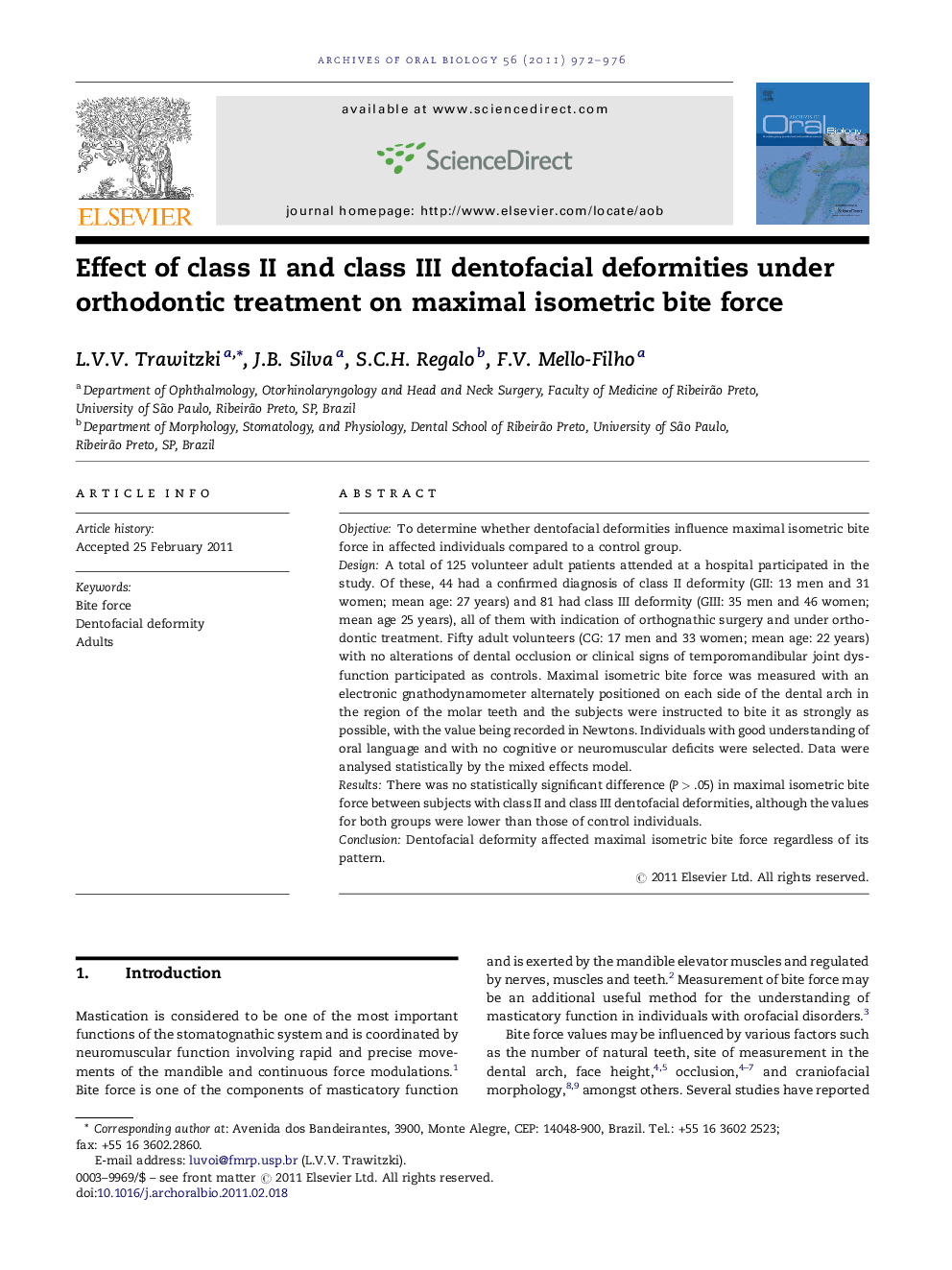| Article ID | Journal | Published Year | Pages | File Type |
|---|---|---|---|---|
| 6051324 | Archives of Oral Biology | 2011 | 5 Pages |
ObjectiveTo determine whether dentofacial deformities influence maximal isometric bite force in affected individuals compared to a control group.DesignA total of 125 volunteer adult patients attended at a hospital participated in the study. Of these, 44 had a confirmed diagnosis of class II deformity (GII: 13 men and 31 women; mean age: 27 years) and 81 had class III deformity (GIII: 35 men and 46 women; mean age 25 years), all of them with indication of orthognathic surgery and under orthodontic treatment. Fifty adult volunteers (CG: 17 men and 33 women; mean age: 22 years) with no alterations of dental occlusion or clinical signs of temporomandibular joint dysfunction participated as controls. Maximal isometric bite force was measured with an electronic gnathodynamometer alternately positioned on each side of the dental arch in the region of the molar teeth and the subjects were instructed to bite it as strongly as possible, with the value being recorded in Newtons. Individuals with good understanding of oral language and with no cognitive or neuromuscular deficits were selected. Data were analysed statistically by the mixed effects model.ResultsThere was no statistically significant difference (PÂ >Â .05) in maximal isometric bite force between subjects with class II and class III dentofacial deformities, although the values for both groups were lower than those of control individuals.ConclusionDentofacial deformity affected maximal isometric bite force regardless of its pattern.
